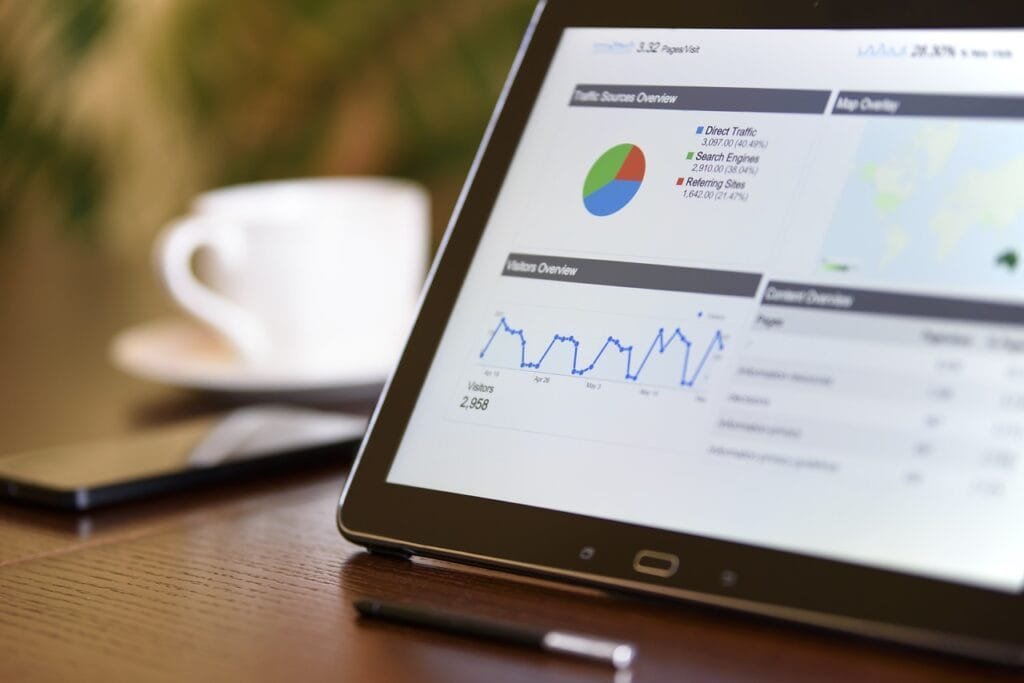Understanding Consumer Goods
In the realm of marketing, understanding the various types of goods is essential for effectively reaching your target audience. Each category of goods plays a different role in consumer behavior and demands distinct marketing strategies.
Types of Consumer Goods
Consumer goods can be classified into four main categories: convenience goods, shopping goods, specialty goods, and unsought goods. Each type has unique characteristics and appeals to different consumer needs.
| Type of Consumer Goods | Description |
|---|---|
| Convenience Goods | Easily accessible, low-cost items that consumers purchase frequently with minimal effort. Examples include snacks and household items. |
| Shopping Goods | Products that require more time and effort to compare before purchasing. These items often have higher prices and include clothing and electronics. |
| Specialty Goods | Unique products with specific characteristics or brand loyalty, resulting in consumers making special efforts to acquire them. Examples include luxury cars and designer clothing. |
| Unsought Goods | Products that consumers do not think about frequently or may not even realize they need until a situation arises, such as life insurance or emergency services. |
Understanding how to categorize your products can direct your marketing strategy effectively and allocate resources appropriately (Corporate Finance Institute).
Impact of Convenience Orientation
One key aspect to consider in marketing goods is the concept of convenience orientation. A study from 2002 revealed that convenience significantly impacts buying decisions by influencing how consumers evaluate a service or product (UX Magazine). Convenience can encompass various factors, such as ease of access, time savings, and the effort required to purchase.
In the context of e-commerce and modern shopping behaviors, convenience has become a critical factor in consumer choices. A 2007 study noted the importance of convenience for mobile device users engaging in Internet shopping (UX Magazine).
Businesses can enhance perceived convenience by providing self-service applications, which shift the workload from staff to customers. This adjustment not only improves customer satisfaction but can also reduce operational costs for companies (UX Magazine).
Convenience orientation can be affected by various influences, including consumer expectations, distractions, and the clarity of communication regarding the purchasing process. These factors can ultimately shape customers’ evaluations of a service (UX Magazine).
By understanding the types of goods in marketing and the implications of convenience orientation, you can develop more tailored marketing efforts to meet the specific needs and preferences of your target market. For additional details on marketing strategies, check our article on marketing strategy for goods and services.
Consumer Goods Classification
Understanding the different categories of consumer goods is essential for effectively marketing your products. Each category of goods has unique characteristics that influence marketing strategies, so it’s beneficial for you as a CEO, CMO, founder, or business owner to be familiar with these classifications.
Convenience Goods
Convenience goods are products that consumers purchase frequently and with minimal effort. These items are typically low-priced, highly accessible, and not significantly differentiated from one another. Common examples include bread, milk, snack foods, and basic beauty products. Since they are bought regularly, they require mass promotion and placement in convenient locations to facilitate easy access for consumers.
Some key features of convenience goods are:
| Feature | Description |
|---|---|
| Purchase Frequency | High (bought regularly) |
| Pricing | Generally low-priced |
| Differentiation | Minimal; similar products available |
| Marketing Strategy | Mass promotion and easy placement |
For a deeper understanding of how to effectively market these types of products, consider reading about promoting goods and services.
Shopping Goods
Shopping goods are products that consumers take time to compare based on factors such as price, quality, and brand reputation before making a purchase decision. Examples include clothing, electronics, furniture, and appliances. Because these goods require more in-depth research, marketing strategies should focus on highlighting quality, features, and the overall value proposition.
Some characteristics of shopping goods include:
| Feature | Description |
|---|---|
| Purchase Frequency | Lower than convenience goods |
| Pricing | Moderate to high-priced |
| Differentiation | Notable; consumers seek unique offerings |
| Marketing Strategy | Focus on comparison, quality, and branding |
For insights into marketing these products effectively, explore market research for goods and services.
Specialty Goods
Specialty goods represent products that possess unique characteristics or brand recognition for which consumers are willing to make a special effort to purchase. These items often include luxury products, niche goods, and items with significant brand influence such as designer clothing, high-end electronics, and exclusive beauty products.
Key features of specialty goods are:
| Feature | Description |
|---|---|
| Purchase Frequency | Rare; bought infrequently |
| Pricing | Typically high-priced |
| Differentiation | High; unique branding or features |
| Marketing Strategy | Focus on brand image and exclusivity |
A tailored approach can help in reaching the target market for these goods. Discover more in our article on target market for goods and services.
Unsought Goods
Unsought goods are products that consumers do not actively seek out or think about until they need them. These include items like funeral services, insurance policies, and certain medical supplies. Marketing these goods often requires a greater emphasis on awareness campaigns and education to inform potential customers about the need for these products.
Characteristics of unsought goods include:
| Feature | Description |
|---|---|
| Purchase Frequency | Rarely purchased/considered |
| Pricing | Varies; can be moderate to high |
| Differentiation | Varies; often based on necessity |
| Marketing Strategy | Focus on creating awareness and need |
Effective strategies for marketing unsought goods can be found in discussions on advertising goods and services.
By understanding the classifications of consumer goods, you can devise targeted marketing strategies that resonate with your audience’s needs and purchasing behaviors. Visit goods and services in marketing to further expand your marketing knowledge in this area.
Consumer Behavior and Marketing
Understanding the different types of goods in marketing is essential for developing effective marketing strategies. Each category of consumer goods—convenience goods, shopping goods, specialty goods, and unsought goods—requires tailored approaches to effectively reach your target market.
Marketing Convenience Goods
Convenience goods are items that consumers purchase frequently and with minimal effort. These are typically low-cost items that are readily available in stores, such as everyday groceries and household supplies. Because consumers are less likely to weigh options, the marketing strategy for convenience goods should focus heavily on availability and visibility.
Key marketing tactics include:
- Location-Based Marketing: Ensure that these products are easily accessible in high-traffic areas of stores.
- Promotions & Discounts: Utilize sales promotions and bundle deals to encourage quick purchases.
- Brand Recognition: Invest in branding that enhances recall and trustworthiness.
Marketing Shopping Goods
Shopping goods are those products for which consumers take time to compare and evaluate options before deciding on a purchase. Examples include clothing, electronics, and appliances. Your marketing strategy should emphasize quality, price comparisons, and brand reputation.
To effectively market shopping goods, focus on:
- In-Depth Product Information: Provide detailed product descriptions, customer reviews, and comparison charts.
- Advertising Campaigns: Launch targeted advertising campaigns that highlight key features and benefits.
- Engagement through Social Media: Encourage consumers to engage with your brand by sharing feedback and experiences on social platforms.
| Strategy Component | Examples |
|---|---|
| Promotion | Sales events, product bundling, special offers |
| Advertising | Online ads, influencer partnerships, targeted marketing |
| Engagement | Social media contests, user-generated content |
Marketing Specialty Goods
Specialty goods possess unique attributes that cater to specific consumer preferences and often carry a higher price tag. Examples include luxury items such as designer handbags or high-end electronics. When marketing specialty goods, your strategy must reflect their exclusivity and desirability.
Consider the following approaches:
- Niche Marketing: Focus on defining a specific target market and tailor your message to appeal to this segment.
- Luxury Branding: Elevate your product’s prestige through high-quality imagery, storytelling, and exceptional customer service.
- Limited Editions or Scarcity: Create urgency through limited-time offers or exclusive availability.
Marketing Unsought Goods
Unsought goods are products that consumers typically do not consider purchasing until they are specifically needed. Examples include life insurance, funeral services, and emergency supplies. Given that these items often require substantial marketing efforts due to their lack of immediate appeal, your approach should be proactive and informative.
Effective strategies for unsought goods involve:
- Awareness Campaigns: Educate consumers about the necessity and benefits of the product, especially in times of need.
- Targeted Outreach: Utilize direct marketing techniques to reach segments likely to require these products.
- Relationship Building: Foster relationships with potential customers through community engagement and informative content.
Allocating your marketing resources wisely based on the type of consumer product is critical. Each type of good demands unique consideration in order to align your marketing strategies with consumer behavior. For a comprehensive approach to marketing goods and services, explore our marketing strategy for goods and services and consumer behavior towards goods and services.
Durable vs. Nondurable Goods
Understanding the difference between durable and nondurable goods is essential for developing effective marketing strategies for your products. Both types serve specific consumer needs and distinctly influence purchase behaviors.
Durable Goods Overview
Durable goods are items that provide value over a longer period, typically exceeding three years. These products are characterized by their longevity and are often considered long-term assets by their owners. As such, they require a different marketing approach compared to goods that are consumed quickly. Common examples of durable goods include:
| Type | Examples |
|---|---|
| Household Appliances | Refrigerators, washing machines |
| Electronic Devices | Laptops, smartphones |
| Vehicles | Bicycles, cars |
For more insights on marketing strategies for various goods, consider exploring the marketing strategy for goods and services.
Examples of Durable Goods
The following table lists examples of durable goods alongside their typical lifespans:
| Durable Good Category | Example | Lifespan (Years) |
|---|---|---|
| Household Appliances | Refrigerator | 10-20 |
| Electronic Devices | Laptop | 3-7 |
| Vehicles | Car | 8-15 |
These durable goods often require careful consideration in terms of pricing, branding, and promotion strategies. For effective strategies to promote these goods, check out our resource on promoting goods and services.
Nondurable Goods Overview
Nondurable goods, also known as consumables, fast-moving consumer goods (FMCG), and consumer packaged goods (CPG), are products that sell quickly and are consumed rapidly. These items are typically needed on a daily basis and contribute significantly to the modern economy. Because of their fast turnover, they require marketing strategies that emphasize convenience and visibility.
| Common Characteristics | Nondurable Goods |
|---|---|
| Consumption Speed | Quick (often within a short timeframe) |
| Marketing Focus | Convenience, accessibility |
To learn how these goods differ in marketing from durable goods, view our article on consumer behavior towards goods and services.
Examples of Nondurable Goods
Here is a table showcasing examples of nondurable goods along with their typical usage patterns:
| Nondurable Good Category | Example | Usage Frequency |
|---|---|---|
| Food Items | Bread, fruits | Daily |
| Beverages | Milk, juice | Daily |
| Toiletries | Shampoo, soap | Weekly |
| Cleaning Products | Laundry detergent | Bi-weekly |
Understanding the different types of goods, including their classifications and examples, is imperative for allocating marketing resources effectively. If you’re interested in the broader impact on your marketing initiatives, consider exploring distribution of goods and services.





















